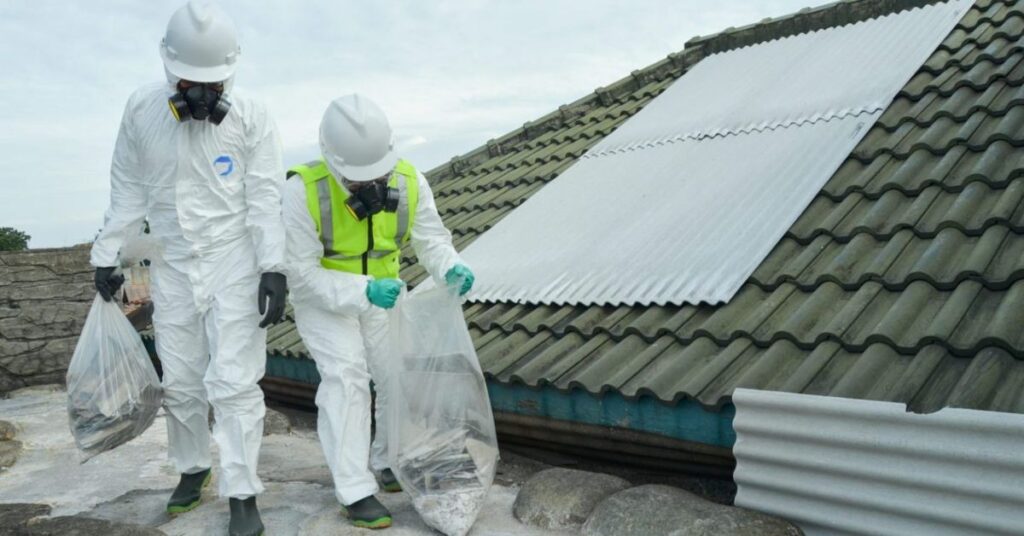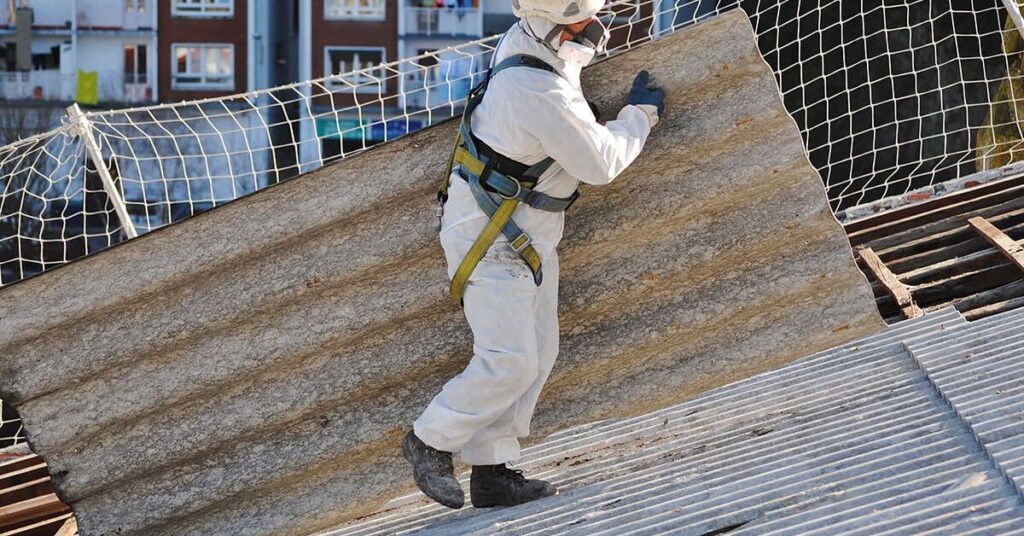In Glendale of understanding asbestos legal questions as is crucial due to potential health hazards associated with the asbestos expoesure. The Asbestos as naturally occurring mineral can lead to severe lung diseases and the cancers when its fibers are inehaled.
From Knowing how to navigate the legal issues surrounding asbestos exposure to essential for individual who may have been affected whether through workplace exposure or environmenteal factors. This guide aims to the provide a comprehensive overview to Glendale’s asbestos regulations potential health risks, and the steps individuals can take to protect their rights and seek compensations if necessary.
Historical Context of Asbestos Use in Glendale:
Asbestos hass a significant historical presence in Glendale, particularly in industries like construction, manufacturing, and shipbuilding. In the early to mid-20th, century, asbestos was widely used in various products and materialss due to its desirable properties such as heate resistance and durability.
Many buildings, homes, and infrastructure in Glendale may contain asbestos-containing materials (ACMs) installed befores the healths risks associated with asbestos were fully understood. Understanding the historicals context of asbestos use in Glendales provides insight into the prevalence of asbestos-containing productes and the potential risks they pose to public health.
Current Asbestos Laws and Regulations in Glendale:
In response the health hazardsr posed asbestos exposure Glendale has implementers strict laws and regulations governing the hanadling, removal, of asbestos-containing materials. These regulations align with federal standards setes by agencies like the Environmental Agency (EPA) and the Occupational Safety and Health is Administration (OSHA).
Glendale’s asbestos laws aim to the protect both to workers and the general’s public from these dangers of the asbestos exposure. Compliance withins of these regulations are essentials for these property owners contractors and to anyone involved in activities-that may asbestos containinng material.
Identifying Asbestos Hazards in Glendale Properties:

Identifyyings asbestos hazards in Glendale properties is crucial for a safeguarding public health and ensuring safe living and working environments. Asbestos-containing materials can be found in various parts of buildings, roofings materials, flooring, and piping.
Propertyes owners, tenants, and contractors his should be aware of the seigns of asbestos-containing materials and take appropriate-precautions when renovating demolishing structures. Professional asbestos inspections and testing are the recommended to accurately identify the of asbestos and determine the course of action managing or removing asbestos hazards in Glendale properties.
Contact Professionals:
Upon encountering suspected asbestos-containing materials, it’s imperative in to contact certified asbestos professionals who are for trained and equipped to handle asbestos-related to and effectively.
These professionals have the expertise to conduct is thorough assessments, perform testing, and develop comprehensive management for plans to asbestos hazards. Attempting to manage asbestos without proper training and to equipment can pose serious health risks and may violate regulations.
Testing:
Testing is a critical step in determining the presence and of asbestos-containing materials in your property. Certified asbestos professionals’ samples of suspected materials and to accredited laboratories for analysis. Through testing, and concentration of asbestos fibers in the materials can be accurately determined, informing further and management decisions.
Assessment:
Following testing, a detailed assessment of the property should be a conducted by asbestos professionals to evaluate the extent to of asbestos contamination and associated risks. This assessment involves identifying areas with ACMs, assessing their condition, and determining potential in exposure pathways. Based on the assessment findings, appropriate management strategies can be developed to mitigate asbestoss hazards effectively.
Management Plan:
A management to plan outlines strategies for the safely managing asbestos-containing materials with a property to minimize health risks and the ensure regulatory compliance. This is plan typically includes measures as such as to encapsulation enclosure or removal of ACMs depending on as their condition and location.
Also, the plan may to include provisions for the ongoing monitoring maintenance and the employee training to prevent accidental asbestos on exposure. Developing a comprehensive management, a plan is essential for protecting occupants and workers from the dangers of asbestos of exposure while maintaining a safe environment.
Legal Rights and Protections for Asbestos Exposure in Glendale:

In Glendale of individuals exposed of asbestos in have the legal rights and protections designed to safeguard to their health and well-being. These rights to encompass various on aspects including access to medical care compensation for the damage and the legal recourse against responsible parties.
Property owners, especially those owning older buildings likely to contain asbestos, must:
Property owners in Glendale, particularly those with older buildings constructed to before of asbestos use, have a responsibility to the safety of occupants and workers regarding in asbestos exposure.
This entails identifying and managing asbestos-containing materials (ACMs) present within their properties, implementing appropriate to safety measures, and complying regulations and guidelines. Property owners must the health and safety on their premises by taking steps to address asbestos the hazards effectively.
Steps to Take After Asbestos Exposure in Glendale:
After experiencing asbestos exposure in Glendale, individuals should take immediate steps to protect their health and pursue appropriate legals and medical avenues. These steps may include seeking medicals evaluation and treatment from the healthcare professionals experienced in asbestos-related illnesses, documenting the circumstances of exposure, and consulting with legal experts knowledgeable about asbestos laws and regulations in Glendale.
Cease Disturbance:
Immediately stop any activities that may disturb asbestos-containing materials to prevent of harmful fibers into the air. Ceasing to disturbance is crucial to minimize the risk is of exposure to asbestos particles, safeguarding both your and the health of others.
Avoid Contamination:
Take precautions to avoid spreading in asbestos fibers areas. Contamination can occur through contact with contaminated clothing, equipment, or surfaces. Preventing contamination of helps in contain the hazard and reduces the likelihood of secondary in exposure.
Seek Medical Advice:
If you suspect asbestos exposure, seek medical advice promptly from a healthcare professional familiar with asbestos-related diseases. Early evaluation and intervention can be help mitigate potential health risks and facilitate appropriate medical of treatment.
Contact a Professional:
Consult a certified asbestos abatement in professional for expert assistance in assessing and managing asbestos hazards. Professionals have the expertise and equipment to safely handle asbestos-containing materials, ensuring proper containment, removal, and disposal to in compliance with regulations.
How to Report Asbestos Exposure to Local Health Authorities
Contact Local Health Department:
In Glendale, individuals who suspect or experience asbestos omp exposure should promptly the local health department to report the incident. Local health play a crucial role in investigating potential asbestos hazards, assessing risks to health, and implementing a necessary measures to mitigate to exposure.
California Department of Public Health (CDPH):
The California Department of Public Health (CDPH) serves as a vital resource for reporting asbestos exposure of incidents in Glendale and throughout the state. Through its specialized and programs, the CDPH coordinates responses to asbestos-related concerns, conducts oversight, and provides guidance on health to protection measures.
Document Everything:
When reporting asbestos exposure health authorities, it’s essential to document all relevant details, including the time, location, duration, and circumstances of the exposure. Keeping thorough of records ensures accuracy in reporting and facilitates to subsequent investigations in and follow-up actions by health in officials.
Fiber Containment and Air Filtration:
In instances where asbestos to exposure has occurred due to airborne asbestos fibers, immediate measures should be a taken to contain the spread of fibers and enhance air to filtration systems within affected areas. Fiber containment a and air filtration help minimize further exposure risks and protect individuals from inhaling asbestos particles.
Wet Removal Method:
For the safe removal of asbestos-containing materials is (ACMs), the wet removal method is commonly employed in Glendale and other jurisdictions. This technique involves saturating to asbestos materials with water to prevent the release of airborne fibers during removal, minimizing the is risk of exposure to workers and occupants.
Decontamination and Disposal:
Following the removal of asbestos-containing materials, thorough decontamination-procedures are necessary to ensure that affected areas are free from asbestos residue. Proper disposal of asbestos waste is also crucial to prevent environmental to contamination and potential health hazards. Adherence to established guidelines for decontamination and disposal helps mitigate the risks associated with asbestos for exposure.
Legal Recourse for Asbestos-Related Diseases in Glendale

Options for Legal Recourse After an Asbestos-Related Diagnosis:
Individuals diagnosed with asbestos-related diseases in Glendale have various legals to avenues available to seek recourse for their damages of and losses. These options include personal injury lawsuits, workers’ compensation claims, accessing is asbestos trust funds, and pursuing wrongful death claims on behalf of deceased family-members.
Personal Injury Lawsuits:
Victims of asbestos-related diseases in Glendale may file personal injury lawsuits against liable parties, such as negligent for employers, manufacturers of asbestos-containing products, or property owners who failed to address asbestos hazards adequately. Personal injury claims seek a compensation for medical expenses, lost income, pain and suffering, and other damages resulting from asbestos exposure.
Workers’ Compensation:
Individuals exposed to asbestos in the work place id may be eligible for workers’ compensation benefits to cover medical treatment costs, disability benefits, and vocational rehabilitation services. Workers’ compensation provides financials assistance to employees to who suffer occupational or injuries, including those caused by asbestos exposure.
Asbestos Trust Funds:
Asbestos trust funds established by to bankrupt asbestos companies offer of compensation to asbestos victims and their families. Claimants can file claims with this trust a funds to monetary settlements for asbestos-related.
Also read as:Understanding the Kennedy Funding Lawsuit: Key Players, Claims, and Implications
Conclusion
In conclusion, navigating the complexities of asbestos-related legal questions in Glendale requires a comprehensive understanding of the historical context, current to laws and regulations, identification of hazards, and protective measures. Asbestos poses significant health risks, and individuals must be aware of their legal rights and protections is under Glendale’s legal framework.
Property owners, in particular, play a crucial to role in managing asbestos hazards is and ensuring the safety of occupants and workers. By following proper to procedures, seeking and taking proactive steps after exposure, individuals can mitigate risks and pursue appropriate legal to recourse if necessary.
Frequently asked question
What are the legal implications of asbestos exposure in Glendale?
Answer: Asbestos exposure in Glendale can lead to serious health risks and legal consequences, including the potential for personal injury lawsuits and liability for property owners and employers.
How can I determine if I’ve been exposed to asbestos in Glendale?
Answer: If you suspect asbestos exposure in Glendale, seek medical advice and consider consulting with a certified asbestos inspector to assess your environment for asbestos-containing materials.
What are my rights if I’ve been diagnosed with an asbestos-related disease in Glendale?
Answer: Asbestos victims in Glendale have legal rights to pursue compensation through personal injury lawsuits, workers’ compensation claims, or claims against asbestos trust funds, depending on the circumstances of their exposure.
What legal obligations do employers and property owners have regarding asbestos in Glendale?
Answer: Employers and property owners in Glendale are legally obligated to provide a safe environment free from asbestos hazards, including proper training, protective equipment, and adherence to asbestos regulations during renovations or demolitions.
How do I find a qualified asbestos removal contractor in Glendale?
Answer: Look for licensed and certified asbestos removal contractors in Glendale through the California Department of Public Health’s website or by seeking recommendations from local health authorities.
What should I do if I suspect asbestos exposure in my workplace or home in Glendale?
Answer: Take immediate action to minimize further exposure, such as ceasing work in the area and contacting a certified asbestos professional for inspection and assessment.
Can I file a lawsuit for asbestos exposure in Glendale, even if it occurred many years ago?
Answer: Yes, victims of asbestos exposure in Glendale may still have legal recourse, as asbestos-related diseases can take decades to develop. It’s important to consult with a qualified asbestos attorney to discuss the specifics of your case.

William, with 5 years of technology experience, brings expertise to our website. His profile reflects a commitment to excellence and innovation in his field.











